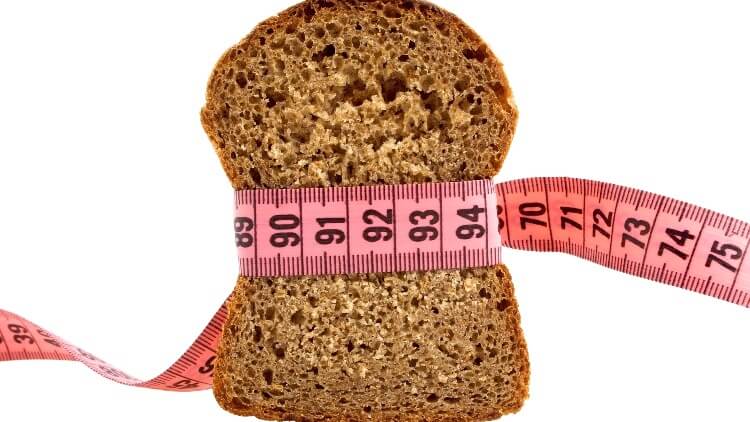
How to Cut Calories to Lose Weight
According to the latest figures nearly 93 million Americans qualify as clinically obese. A correspondingly high number of people suffer from diabetes, high-blood pressure and erectile dysfunction due to obesity and high cholesterol.
One reason for why many people are heading down the path to obesity and developing associated illnesses is the inability to develop and maintain healthy diets.
Cutting calories to lose weight is the only way to make sure you remain fit and healthy for the rest of your life. As such, this blog will inform you on how to use a cutting calorie calculator and the principles of weight-loss in terms of a net calorie deficit.
Hopefully, by the end of this blog, you will know how to monitor your own weight loss and set yourself down the path of perpetual health.
- Does cutting calories to lose weight work?
- How your TDEE changes over time
- Health risks from cutting calories to lose weight

Does cutting calories to lose weight work?
The human body needs the energy to carry out all of its biological processes including both the unconscious and conscious processes like breathing, walking and running. This energy comes from the food you eat, which contains calories.
Contrary to popular belief, calories aren’t a measure of fat content but rather the amount of energy contained in foods. If you eat food that contains more energy than you need to function on a daily basis, this extra energy (also called calories) are stored as fat for later use.
For most people, their calorie intake is much higher than they need for their daily functioning and therefore they continue gaining weight. The idea here is that they accumulate calorie surpluses which lead to weight gain and increased fatty deposits in the body.
However, what if they ate food which contains fewer calories than they need to use to function throughout the day? In such a situation, their bodies will begin to rely on the fat deposits to generate energy. To overcome the shortage of energy, your body will burn fat to generate energy and therefore you will lose weight.
Weight loss through calorie cutting is an application of the first law of thermodynamics which can facilitate or hinder weight loss. The only way you can ever lose weight effectively is if you burn more calories than those you’re consuming, which will require burning fat deposits.
According to research, it’s a matter of how effectively energy deposits in the body burn that determines weight-loss. Every carbohydrate molecule releases nearly 40% of its energy when burned; the rest of it is released as oxygen, carbon dioxide and heat energy.
From these ideas, it becomes clear that more fats need to be burned to achieve the same levels of energy that you derive from direct food intake. As a result, just eating less would have you losing weight and cutting calorie intake is a very effective way of losing weight.
Another possibility is to increase the amount of energy you’re using throughout the day without cutting down your calorie intake. This would involve intense workouts and exerting yourself in potentially harmful ways, but these strategies are difficult to implement since the amount of work needed to cut weight significantly can be beyond the dieter’s ability. Either they would give up the workout or they might injure themselves.
Perhaps a better way would be to cut down calorie intake and workout to speed up the weight loss process. As such, cutting back on calorie consumption is the most effective weight loss strategy.
The best weight loss technique is one where people keep track of how many calories they consume and how much they work off. So if you can’t work off the excess calories, maybe you can cut down on the calories you consume to maintain a healthy weight.
Therefore, to achieve this balance, you need to have some basic math down so that you can measure your calorie intake/loss and also set appropriate weight goals.

Calories In One Pound Of Fat
According to research, one pound of fat contains approximately 3500Kcal of energy. According to these numbers, cutting 500 calories a day can have you lose at least 1 pound of fat every week.
You’ll find a lot of people debating these figures, because scientists are of the opinion that the energy calculations are reductive and that these calculations are based on a flawed understanding of the chemical composition of the adipose tissue.
However, new readings point out that the actual energy contained in a pound of fat is somewhere between 3200Kcal-3600Kcal and this isn’t much of a difference.
The one thing you need to understand is whether you know what your calorie intake is and how much you need to cut out to achieve effective weight loss. If you cut calories but still don’t lose weight, then it’s only a sign that you should cut more calories from your diet than you currently do.

Cutting Calories Calculator – Using TDEE
Total Daily Energy Expenditure (TDEE) is the amount of energy you’ve consumed over the course of a day. Calculating calories can be a bit of a hassle considering we can only work with estimated amounts of calories that we’ve used up in a day or the calories that we’ve used. You can, however, use a cutting calories for weight loss calculator to keep track of your TDEE.
These calculators take into account your age, sex, height, the amount of exercise you get in a week and your current weight to calculate the ideal calorie intake.
Additionally, some of these will also tell you your ideal weight, Body Mass Index measurements, your maximum muscular potentials and the breakdown of ideal macronutrient intake.

How to Calculate Your Daily Calorie Deficit
A calorie calculator will tell you how many calories you need to take in for you to maintain your weight. As such, any amount of calories consumed below that number would automatically help you lose weight.
If you have a set weight loss goal per week, for example 1 pound a week, and you have a weight maintenance calorie level of 2600kcal/day then you can do the math as follows:
- Calorie deficit to lose 1 pound of fat in a week = 500kcal/day
- Maintenance calorie count (MCC) = 2600kcal/day
- Calories amount to lose 1 pound a week = MCC – calorie deficit required to lose 1 pound of fat
So, your numbers become:
- To lose 1 pound a week = 2600 kcal/day-500kcal/day =2100kcal/day (14700kcal/week)
So you should consume 2100kcal/day to lose 1 pound of fat in a week.
Similarly, if you want to lose 2 pounds of fat in a week, then your calorie calculations should become something like:
- Calorie deficit to lose 1 pound of fat in a week = 500kcal/day
- Calorie deficit to lose 2 pounds of fat in a week =1000kcal/day
- Maintenance calorie count (MCC) = 2600kcal/day
- Calorie amounts to lose 2 pounds in a week = MCC – Calorie deficit to lose 2 pounds of fat in a week
So the numbers become:
- To lose 2 pounds in a week = 2600 kcal/day-1000kcal/day = 1600kcal/day (11200kcal/week)
Projecting Your Weight Loss Using Your TDEE And Calorie Deficit
This is pretty simple and you will lose 1 pound of fat if you lose 3500Kcal of energy. We divide this up in 7 days to give a calorie deficit of 500kcal/day so that you can lose 1 pound of weight in a week. So in a month’s time, you can lose 4 pounds.
Similarly, if you’re trying to lose 2 pounds of fat in a week and you cut 1000kcal/day (7000kcal/week) then you can lose 8 pounds of weight in a month. You can create these projections rather easily with some simple math.
![]()
How Your TDEE Changes over Time
TDEE is directly tied to your body’s metabolism. Metabolism refers to the rate at which calories are spent in your body. As such, if you change the way you eat, if you workout more or as you grow older, your body adjusts the rate at which it metabolizes fat tissues which ultimately affects the rate at which you lose weight.
How Your Changing TDEE Affects Your Calorie Deficit
If you increase your TDEE by, let’s say, working out more often; then your body will adapt to extreme exercise and change its metabolic processes. This is called “exercise conditioning” where the body takes longer to burn fat than it would before you began working out.
This is one of the reasons why calorie deficits are a much better way to lose fat.
As your body gets fitter, your TDEE falls because it takes you less effort to get the same amount of work done. As the strain on your body gets lower, the weight loss also gets lower and you might feel like you have to work out more to lose the same amount of weight.
As such, your calorie deficits will lose magnitude and weight loss processes will become inefficient.

Health Risks from Cutting Calories to Lose Weight
Calories are the sole source of energy for your body. People tend to overdo their calorie cuts to suffer from nutritional deficiencies and suffer from weakness. Anyone who goes through a consistent calorie deficit risks suffering from conditions like arthritis, weakness and fatigue in the long-run.
Therefore, you should be careful about your calorie deficits to ensure that it doesn’t enhance the risk of you developing long term health conditions.
Why You Shouldn’t Cut Too Many Calories
Although cutting a greater number of calories will ensure greater weight loss in a shorter span of time, in the short-run it can wear you down. People who reduce their calorie intake below 1000kcal/day will put themselves at risk of the following conditions:
- Permanently tampering with their metabolism
- Nutritional deficiencies
- Fertility issues
- Contracting arthritis and mess with their immunity
When To Seek Medical Advice
Although it’s possible for you to get back to normal by increasing your calorie intakes, sometimes people can’t make it back from the changes. In these moments, whether to overcome the symptoms of the conditions that they’ve contracted due to calorie cuts or to come back to healthy nutrient levels they should seek out medical advice.
If you suffer from conditions like diabetes or blood pressure, then you should speak with your doctors as soon as you feel any changes. They will change your diet plans and get you back on track to live a healthier life.

Why A Long Term Calorie Deficit Isn’t Recommended
The longer you maintain a calorie deficit, the more intense the damage from the exercise. As such, you should not maintain a long-term calorie deficit to ensure that you don’t inflict long term damage to your body.
Irrespective of whether you need to lose weight and a calorie deficit proves to be effective, a healthy diet is always one that fulfills all the basic nutrition requirements.
Conclusion
In conclusion, cutting calories to lose weight is potentially the most effective weight loss method known to man. Managing your weight is an exercise in balance that you should maintain to live longer and live a better quality of life.
This blog has discussed how cutting calories can help lose weight, the calculations involved and how you can use a cutting calories calculator.
Always remember that you should keep up with your daily nutrition requirements and stop cutting calories by the time that you’ve reached your weight goals. You might also want to consult your primary physician to plan out how your weight loss will progress and how you can avoid the long-term damage from the exercise.
Calorie cutting in moderation might be an effective way of losing weight, but moderation is key to ensuring that you can remain healthy to enjoy the benefits of healthy weights.





